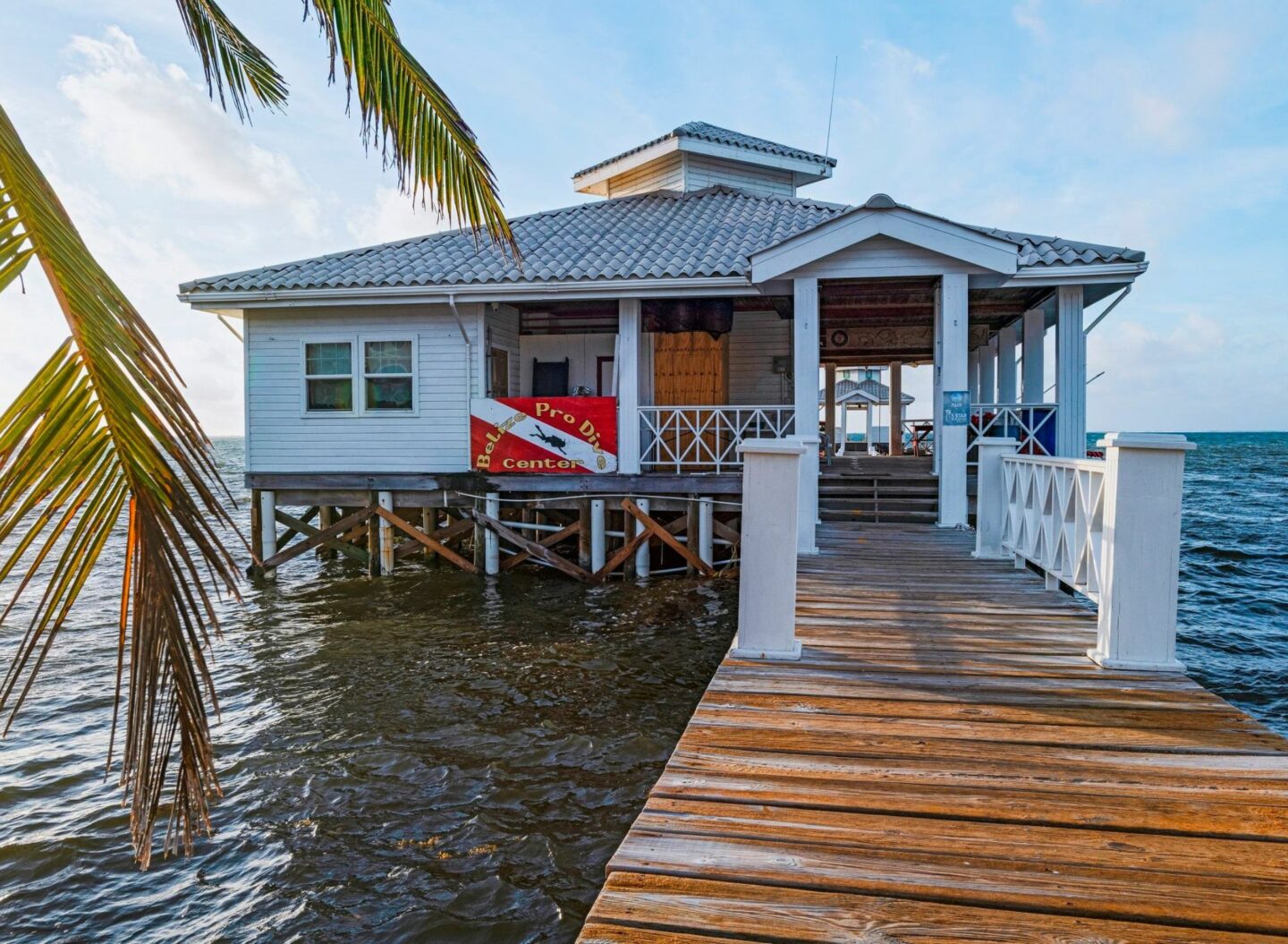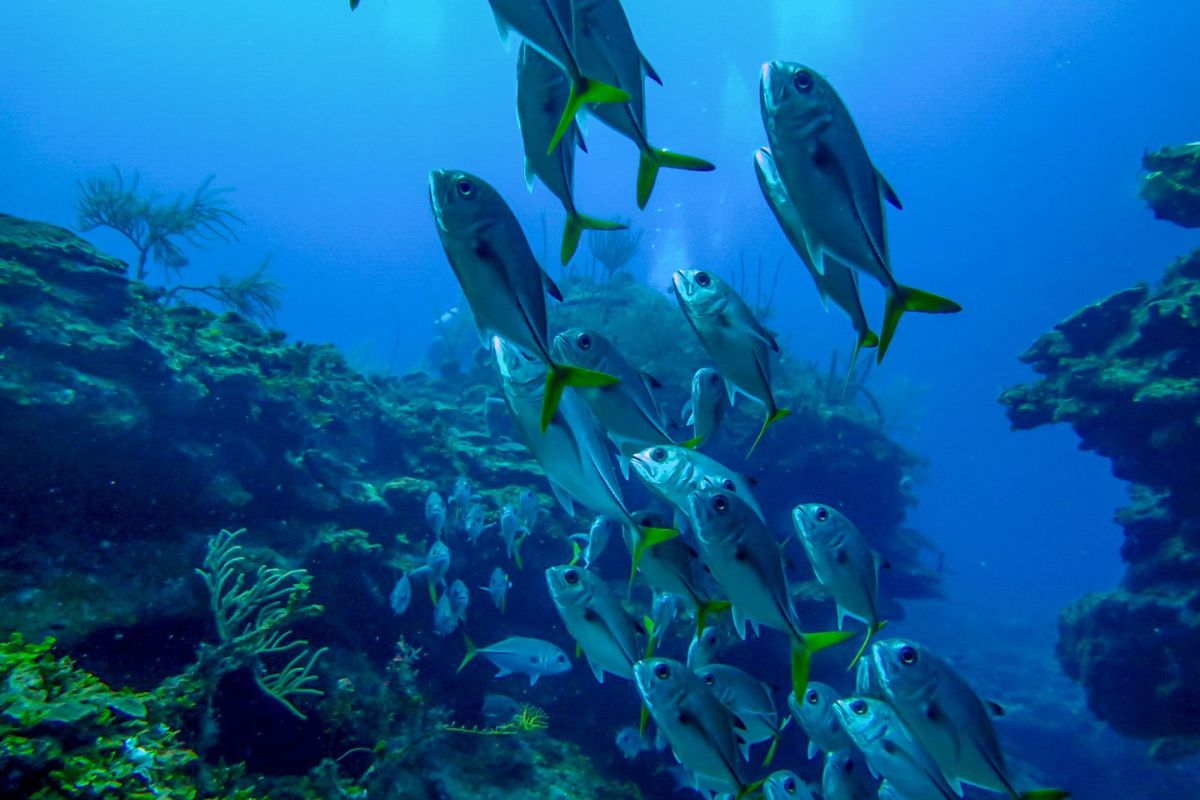
One of the deck team takes my hand and I’m hoisted onto the small vessel. As we set sail for Hol Chan Marine Park, we see Alaia Hotel in the backdrop shrink to a minuscule painting. Reaching the break to enter deeper waters, the boat begins to rock side to side and I start questioning my seat choice at the front of the boat. Clearly very much used to the weather, the Captain laughs as we all exhale a sigh of relief from the much appreciated splashes of the waves- no complaints here.
How do I travel to San Pedro from Belize City?
The team ushers me forward, and it’s my turn to secure my life jacket, flippers, and mask. One by one, we launch ourselves into the water. Away from the busy jump-off spot, the ocean feels eerily quiet. A bed of sea grass sways below. Though difficult to communicate, the bubbles and splashes say it all. Just 5 feet or so beneath a pack of eagle rays glide peacefully on by.
Where is Hol Chan Marine Park?
About a short 20-minute boat ride from San Pedro sits Hol Chan Marine Park. A UNESCO heritage site in Belize, this spot is filled with tourists hoping to catch a glimpse of the country’s eclectic marine life down below. Close to Ambergris Caye and Caye Caulker, off the coast of Belize. Meaning “little channel” in Mayan, the park is filled with coral reefs, seagrass beds, mangrove forest, and an abundance of wildlife.
Any boat entering the area needs a special permit, so it’s advised to visit Hol Chan Marine Park with a tour guide. A relatively easy journey, most companies offer day trips here with lunch included and excursions (ranging from $70 upwards depending on your inclusions). If you’re staying in San Pedro for awhile, then I’d look into Alaia Belize, Autograph Collection. The property has its own stretch of beach directly across from the gateway to Hol Chan. The Hotel’s private dock offers daily excursions from diving to swimming with sharks.
A complete guide to Ambergris Caye, Belize

Different Zones at Hol Chan Marine Park
Zone A: Coral Reef
A protected area in Belize, swarms of marine life can be found swimming amongst the coral reefs below. In areas as shallow as 5 or so feet, groupers, snappers, barracudas, and other fish species peep out. Just outside the reef, the Ocean floor slopes into the vast seas- which makes for ideal diving conditions.
Zone B: Seagrass Beds
For its sheer peacefulness alone, the seagrass beds should not go amiss. A rarity in most oceans worldwide, these soft beds serve as feeding grounds for many species. While you won’t see as many fish here since they’re pretty well camouflaged, you may be lucky and see a turtle or two.
Zone C: Mangroves
Hidden species thrive in the root systems of the Mangroves. One of the most biologically diverse habitats for marine life, it’s important to just float gently, so as not to stir up the debris and cloud the water. Nurse sharks have been known to glide through the roots- so keep an eye out!
Zone D: Shark Ray Alley
‘Puppies of the sea’, Nurse Sharks wait in anticipation for swimmers and boats entering their territory. In hopes of some food, the sharks instantly approach swimmers in an excitable yet calm manner. Of course, it’s always important to remember that these are wild animals, but it’s very safe to snorkel with them from a distance if you’re with an experienced guide!
